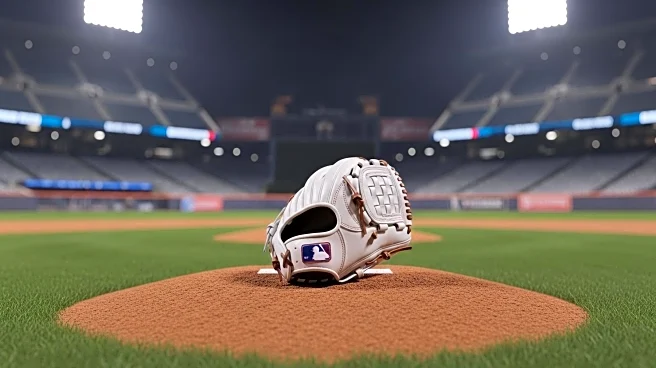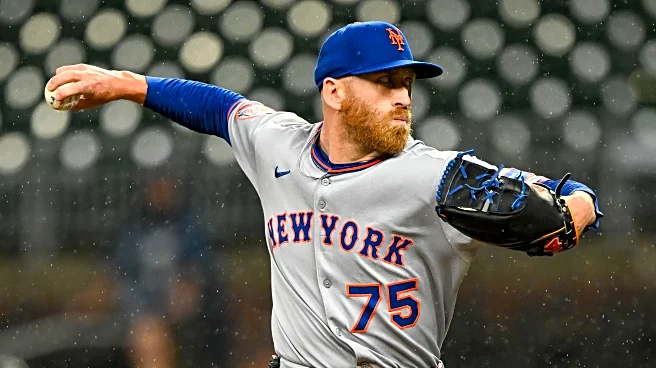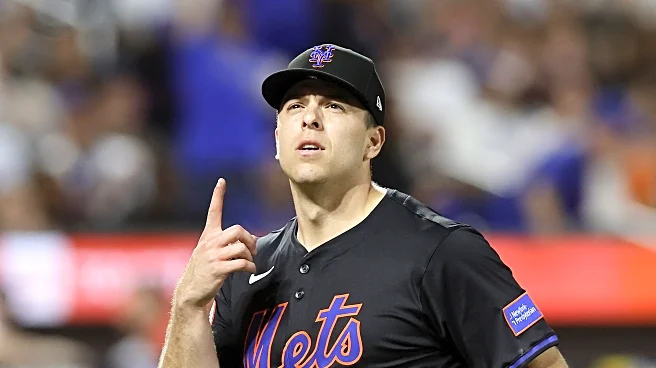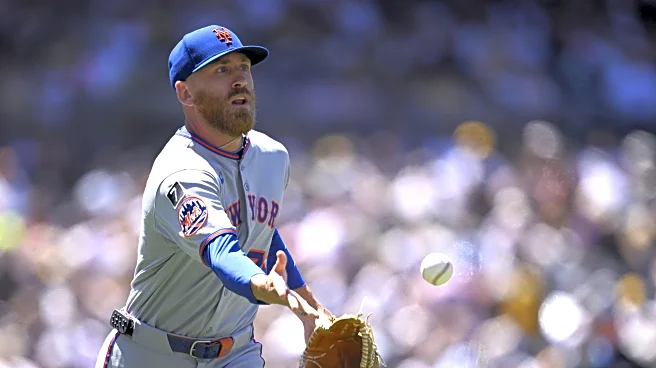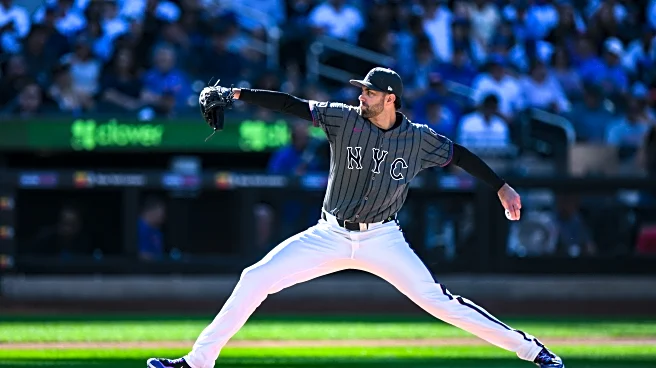What's Happening?
Reed Garrett, a pitcher for the New York Mets, has undergone Tommy John surgery, which will sideline him for the entire 2026 season. Garrett's surgery comes after a series of elbow issues that began with inflammation diagnosed in August. Despite a brief return in September, renewed discomfort led to an MRI revealing a sprain, prompting the decision for UCL reconstruction. This procedure typically requires a recovery period of 12-18 months. Garrett's absence will significantly impact the Mets' bullpen, which is already facing potential changes with several relievers, including Ryan Helsley and Tyler Rogers, eligible for free agency.
Why It's Important?
Garrett's surgery and subsequent absence from the 2026 season will have a notable impact on the Mets' bullpen strategy. With Garrett out, the team will need to reassess its roster and potentially seek new talent to fill the void. The bullpen's dynamics are further complicated by the potential free agency of key players like Ryan Helsley and Tyler Rogers, as well as closer Edwin Díaz's likely opt-out. These changes could lead to a significant restructuring of the Mets' pitching staff, affecting their competitive edge in the upcoming season.
What's Next?
The Mets will need to make strategic decisions regarding their bullpen composition for the 2026 season. This includes evaluating Garrett's future with the team, as he is eligible for arbitration as a Super Two player. Additionally, the team must consider the potential departures of other relievers and the impact of Edwin Díaz's contract decision. The Mets may explore trades or free-agent acquisitions to bolster their bullpen and maintain competitiveness.
Beyond the Headlines
Garrett's surgery highlights the physical demands and risks associated with professional baseball, particularly for pitchers. The prevalence of Tommy John surgeries among Mets pitchers underscores the need for effective injury prevention and management strategies within the sport. This situation may prompt discussions on player health protocols and the long-term implications of such injuries on career longevity.

